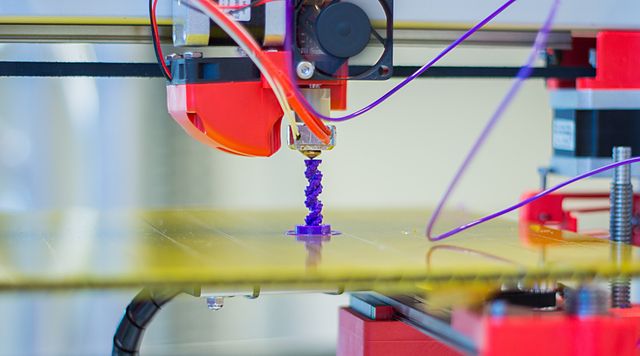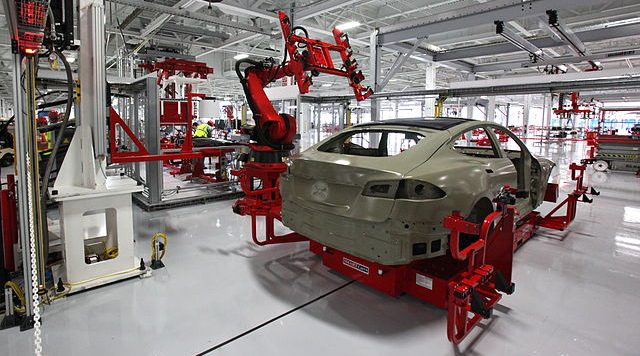
How about a nice game of chess? (Franz Steiner – CC BY-SA 4.0)
It’s no secret that artificial intelligence and robotics are going to be some of the most disruptive technologies in the 21st century. Manufacturing jobs have been automated, computer power has been accelerating at an exponential rate, and it seems like we have only ten or twenty years before the machines completely take over our lives. What does that mean for us? Will we be able to cope? What do we need to do?
In this series, we’ll explore all of that and more, including the positives and negatives. Let’s go!
1. Automation Could Shorten Our Work Week.

The basic principles of our economy have not changed in almost eighty years, but they will… (FDR Presidential Library and Museum – CC BY 2.0)
When the Fair Labor Standards Act was signed into law in 1938, it became one of the most important pieces of President Franklin D. Roosevelt‘s New Deal. It established the forty hour work week, overtime pay, child labor restrictions, and the minimum wage. While it has served as a great blueprint for the expansion of anti-discrimination laws, it never really kept up with the rapid expansion of technology over time.
Between then and now, personal computers, the Internet, cellular phones, robotics, and other labor-saving devices have been introduced to the market. Now that driverless cars and nearly fully automated restaurants are on the horizon, how are we going to be able to manage the transition in our society?
One way would be to amend our old laws for a new era. If computers are going to be taking over more of our society’s work than we ever thought possible, it may be time to establish a 30 to 35-hour work week to keep people employed and alleviate a possible labor crisis. Low skilled and dangerous jobs will inevitably be lost, but proactive measures can get us through the worst issues and help people move on to bigger and better things.
2. If You Can Dream It, You Can Build It.

If we can do this now, imagine the possibilities that twenty years could bring! (Jonathan Juursema – CC BY-SA 3.0)
In the world we know, the dreams of entrepreneurs can often die because of one roadblock or another. It can be difficult to create the next big thing when one is worried about finding millions of dollars in funding, looking for a manufacturer, jumping through hoops, and putting up with the possible hassles to get that first big production order. However, that may not be all that much of a problem in the future because of the rise of robots and 3D printing.
What if these technologies can create the next great wave of jobs right here in our own backyard? It’s not that hard to imagine.
While automation may be a big influence on large companies now, there will come a time when the cost comes down and the little guy can afford to purchase them. At that point, we may be looking at the development of mini-factories that can produce everything we need with a few reasonable inputs. It may cause people to move away from manufacturing jobs, but it will unleash the power of ideas in ways that we cannot foresee.
The possibilities are limitless.
3. It Can Reduce Or Eliminate Workplace Illnesses and Injuries.

These could go anywhere and do anything. (Steve Jurvetson – CC BY 2.0)
A part of the problem with human labor is that we are fragile. It can be easy to get injured on the job, diseases like black lung can kill us, and our troubles only compound from there if it takes too long to get back to work. The move towards automation may displace people, but it can also save lives and ease the burden that families may be forced to endure because of their jobs.
A major benefit of the rise of the robots is that they are immune to diseases and less prone to accidents, which will lower healthcare and insurance costs for everyone. This will benefit the economy in many ways. With that said, there is a darker side to the subject that we will explore together in our next piece.
4. Lower Prices And More Investment Income For Everyone.
It has often been said that automation and AI will just screw people over, but people tend to ignore the benefits of these technologies. Whether you are in the stock market or the store, there are a few things that robotics can do for everyone, regardless of their income or willingness to start a business. For starters, let’s take a look at two of the biggest issues in business: pricing and quality control.
When a consumer compares two items, these two considerations are often at the front of their minds. In general, people like to pay a lower price when two items are similar in quality, but what if they could pay much less for more items that are equal or better in quality?
The robots don’t have to produce perfect goods or services, but fewer recalls, lower prices, and more abundance will allow everyone to save and invest more of their hard-earned cash. This can push the stock market to higher ground over time, but it may also force companies to offer higher dividends as investors strive to get the most bang for their buck.
Higher profits. They make you drool when you think about them.
In the coming days, we will explore the darker side of automation and artificial intelligence. It may be in the realm of science fiction now, but today’s storytelling often leads to tomorrow’s facts of life. See you then!

No Comments Yet